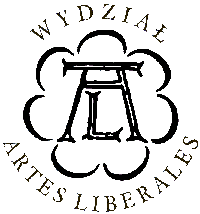The project is financed by the National Science Center and carried out at the Faculty „Artes Liberales” at the University of Warsaw in cooperation with the Dora Stratou Dance Theatre


| Testimony of: | banknote |
| Source | Ταρσούλη 1964, 453 (in EEH, sv. Αντρόυνο , p. 56) |
| Original text | Υστερα από τους αντρίκειους χορούς έρχονται οι "γεναικίσιμοι", που τους χορεύουν οι κοπέλες με σεμνόπρεπο ύφος. Είναι οι Καρτσιλαμάδες, οι Συρτοί και ο Αραμπιές, σαν εισαγωγή στον χορό που θα γίνει τώρα από τους νιόπαντρους. Ο γαμπρός, με ολόστητο κορμί, μ' ένα μεταξωτό μαντίλι στον λαιμό κι ένα κλωνί βασιλικό στ' αυτί, σηκώνει τη νύφη που "κουκκουμώνει" (καμαρώνει), και που με μικρά ρυθμικά βήματα, σεμνή και χαμηλόθωρη, αρχίζει το χορό μαζί του, ο ένας κατάντικρυ στον άλλο. Ο κόσμος τους καμαρώνει, τους χειροκροτεί και "πλουμίζει" τη νύφη "σπλιγγιάζοντας" (καρφιτσώνοντας) πάνω στο φόρεμα και στο πέπλο της χάρτινες λίρες, μονόλιρα και πεντόλιρα, όπως και ρίχνουν λεφτά στον δίσκο των μουζικάντηδων. Επειτα η νύφη, αφού της ξεκαρφιτσώσουν τα χαρτονομίσματα από πάνω της, χορεύει τον Συρτό με τις κουμέρες. |
| English translation | After the male dances come the female ones, danced by girls of modest looks. There is Kartsilamas, Syrtos, Arampies - as an introduction to the dance, which will be danced by the newly married couple. The groom, adorned, with a silk kerchief around his neck and a stem of basil behind his ear, lifts the bride who is being honoured and who, with small rhythmic steps, humble and modest, follows the dance next to him, opposite of him. The people honour them, applaud them and “adorn” the bride by pinning banknotes of one and five on her dress and veil, and also throw money on the plate of the musicians. After the banknotes have been unpinned from her dress, the bride in turn dances Syrto with her bridesmaids. |
| Time/occasion of occurence | wedding |
| Region of occurence | Cyprus - Show on map |
| Function | decorative, payment, |
| Dance name | Androuno |
| Comment | it is called „adoring” |